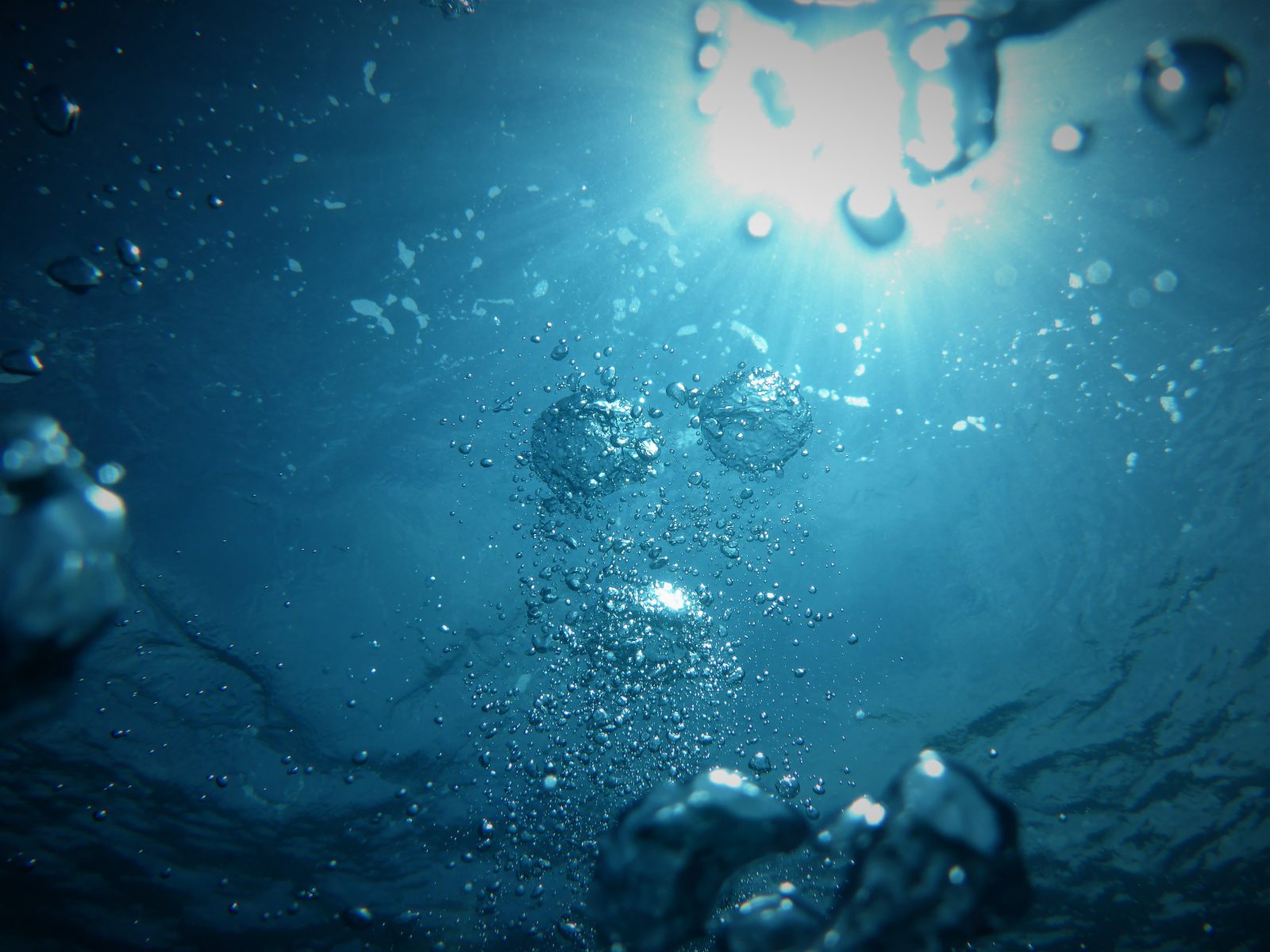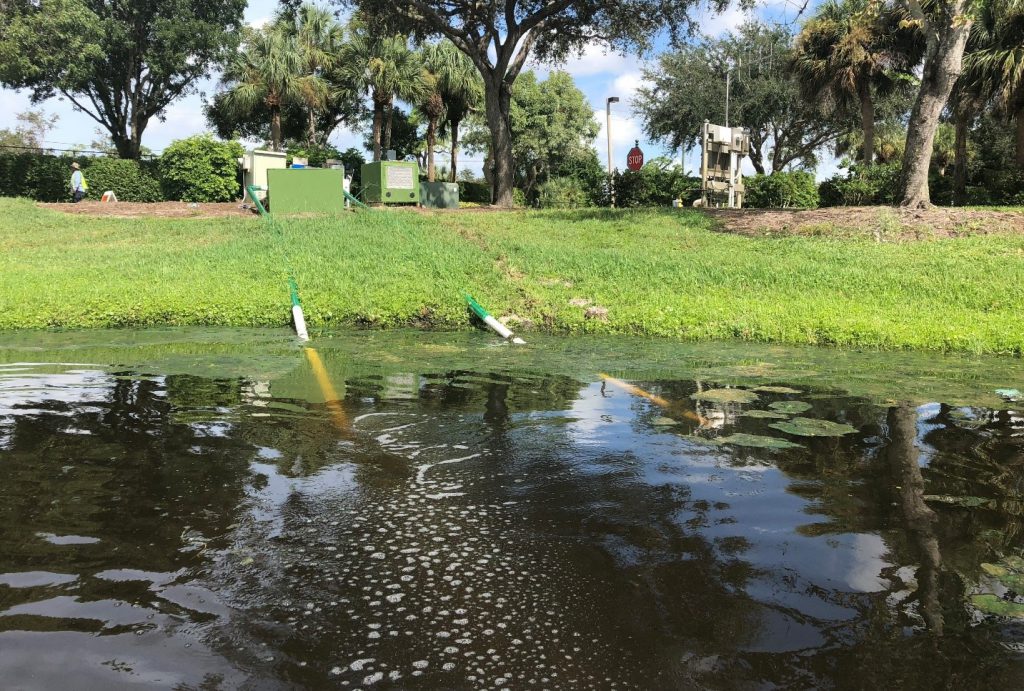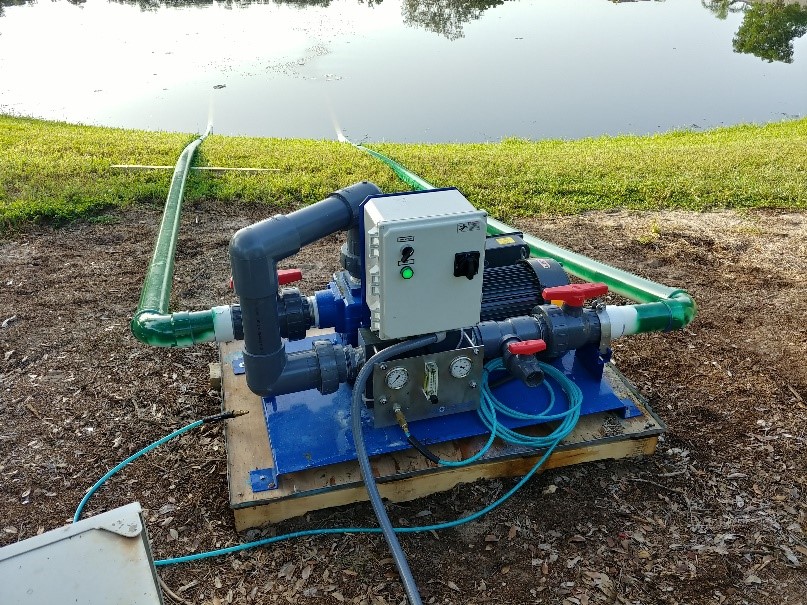

Site Description
Location: Bonita Springs, FL
This site is a large planned community within a Community Development District in Bonita Springs, FL. There are approximately 1,821 acres within the CDD. The community includes several golf courses, recreational areas, and over 50 lakes. The lakes serve as stormwater detention ponds, scenic lakes for golf courses, and irrigation reservoirs.
Lake A18 is approximately1.3-acres with an average depth of 8ft. It is adjacent to the golf course and has multiple homes around its perimeter. The property was plagued by multiple species of algae—the most problematic of which were cyanobacteria (blue-green algae) and filamentous green algae.
Scope of Work
The project entailed installing a nanobubble generator and monitoring lake parameters following installation including: dissolved oxygen levels, total dissolved solids, salinity, conductivity, clarity, and temperature.

Project Description
Lake A18 has persistently experienced problematic algal blooms that require extensive treatment with little long-term success. Due to difficulties faced in conventional control management, the lake was deemed a candidate for experimental control using new nanobubble aeration technology. Nanobubble technology designed to exceed the oxygenation capabilities of traditional aeration systems.
Nanobubbles produced by submersed generators are ultra-fine about 400 times smaller in diameter than human hair and 1 million times smaller than ordinary bubbles. As a result of their size, nanobubbles have no natural buoyancy. Rather than improving water quality like traditional aeration systems, which use rising larger bubbles to induce circulation and transfer of atmospheric oxygen throughout the water column, nanobubbles remain within the water column for extended periods of time, providing 79,000x more oxygenation than traditional aeration systems.
In August 2018, SOLitude installed a Moleaer nanobubble generator in A18. The device ran until early November with a few intermittent downtimes for repairs and maintenance. The device uses a 7.5hp pump to circulate water from the lake while injecting beneficial nanobubbles into the water column. Algaecide treatment was discontinued for the entirety of the test to allow for an objective measure of successfulness. Within 2 weeks, there were no visible algae on the surface of the lake and the algae on the lake bottom were observed to be dying off. The algae remained absent from the lake during the entirety of the test, with results expected to last at least 2-3 months.
Dissolved oxygen (DO) measurements taken before and during the test indicated that the DO had risen over 50% in the water just above the lake bottom. It is hypothesized that the nanobubbles have also diffused into the organic muck, providing oxygen for aerobic bacteria. Based on a monthly average of the algaecides used to treat the lake prior to the test, approximately $1,000 was saved in algaecide application costs alone. This does not include labor or equipment. Residents commented that the lake looked better than it ever had and were ecstatic about the results.









